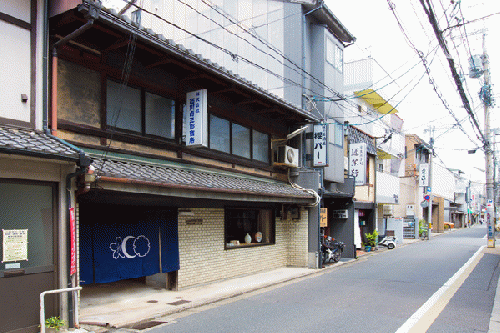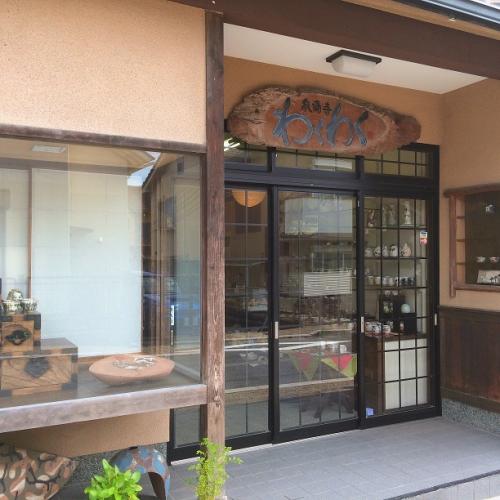
- Ceramic
- Kyoto
Kyo ware/Kiyomizu ware Kyo yaki Kiyomizu yaki
Many kinds, small quantity handmade production
we produce pottery as sophisticated and delicate as the town of Kyoto
Description
What is Kyo ware/Kiyomizu ware ?
Kyo-ware/Kiyomizu-ware (called Kyo yaki/Kiyomizu yaki in Japanese) is a type of pottery produced in the Kyoto area. Originally, Kyo-ware was a general term for all pottery produced in Kyoto, while Kiyomizu-ware specifically referred to pottery produced on the road leading to the Kiyomizu Temple and is one of many sub-categories of Kyo-ware. Today, Kyo-ware designates a large variety of potteries made in different parts of Kyoto. Kyo-ware is also known as Kyoto-ware.
Many distinct techniques are used to create different kinds of potteries, but as long as they are produced in certain areas of Kyoto, they are considered Kyo-ware or Kiyomizu-ware. Each kiln also has its unique traditions and specialties.
Kyoto is a city that is known for preserving many long-established traditions and arts. Several types of tea ceremonies, flower arrangement, or incense ceremonies during which the smell of the incense is tasted with traditional Kyoto cuisine or sweets, are among the most famous. It is within this environment that Kyo-ware developed as a craft.
Even with mass production being the norm now, Kyo-ware/Kiyomizu-ware is still handmade using traditional techniques.
History
Kyo-ware was first created during the Nara and Heian periods (710-1185) and production grew as tea ceremonies became increasingly popular during the Azuchi-Momoyama period (1573-1600).
At the beginning of the Edo period (1603-1868), highly skilled artisans of this craft started to appear and lead to the rapid development of modern Kyo-ware.
A few of these artists are Ninsei NONOMURA, a potter from the Hyogo prefecture who made magnificent painted ceramics and Kenzan OGATA, younger brother of the painter Korin, who created pieces with original designs in collaboration with his brother. During the latter part of the Edo period, Eisan OKUDA became famous for his beautiful porcelain. Other master craftsmen include Mokubei AOKI, Douhachi NINNAMI and Hozen EIRAKU.
During the Meiji period (1868-1912), the use of European porcelain production methods led Kyo-ware/Kiyomizu-ware to expand into markets abroad. Artisans of this craft continue to maintain traditional techniques that have been around since the beginning, while finding new variations in design in order to maintain appeal.
General Production Process
- 1. Kneading the clay
The first process is to thoroughly knead the clay by hand. When done meticulously, all of the air is removed and an even firmness is ensured.
Since potter’s clay is no longer produced in Kyoto, it must be imported from different regions in Japan. The clay is mixed with kaolin, kibushi clay, silica and feldspar.
- 2. Casting
There are various casting methods such as lathe casting, hand forming and molding with differing results for each.
Lathe casting is a method where the kneaded clay is placed on the center of disc-shaped rotating potter’s wheel, using centrifugal force while soaking the clay with water. Different types of potter’s wheels include hand, kick, and mechanical potter's wheels. This is a technique that usually requires many years of experience.
Hand forming is a method where the clay is casted while twisting, using fingertips, and a bamboo spatula. This is the easiest method and doesn't require the use of a lathe.
When molding, mud made from mixing base clay with water and silicic acid soda is poured into a plaster mold, which enables the casting of delicate forms and the production of many works with the same shape. - 3. Drying and planing
Once the cast pieces have reached a semi-dry state through drying for several days, they are planed. A stand called a chuck is installed on the potter’s wheel, and the piece is hung upside down. The foot is trimmed and the whole body is shaved with a metal plane or bamboo spatula while rotating the wheel.
Decoration is then applied with finishing tools and pieces are dried in the sunlight.
- 4. Bisque
Bisque firing refers to firing the clay for the first time. This is done in order to reinforce the cast items and make it easier to decorate and glaze afterwards.
- 5. Undercoating Undercoating is done before the glaze firing. All the drawing is hand done with specific brushes and different metal colorants such as iron oxide and asbolite which makes a deep blue color.
- 6. Glazing
Colored, transparent, and frosted glazes are applied to the piece. During and after the firing, different colors, transparency, and shine appear.
This process is as important as molding as it greatly affects the appearance of the finished work.
- 7. Glaze firing
This step consists of fusing the glaze and clay in a separate firing. Pieces that have been glazed are loaded into the kiln and baked at a high temperature. Instead of climbing kilns, the modern standard is gas or electric kilns.
Depending on the desired texture, oxidation firing or reduction firing is used.
- 8. Overglazing
This is the decorating process after glaze firing. Some pieces do not need to be overglazed.
Decoration and coloring are carried out with a fine brush using all kinds of metal colorants. Gold and silver is also often applied.
- 9. Overglaze firing
After overglazing, the pieces are baked again at a low temperature. This process produces colors, shine, and prevents damage such as peeling. This is a precise step as the items and temperature have to constantly be checked in order to make sure the glaze has dissolved.
The kiln is cooled and the pieces are removed after firing.
Leading Ateliers
Nishikawa-teizaburo-shoten atelier

Many kinds, small quantity handmade production With assiduity, we produce pottery as sophisticated and delicate as the town of Kyoto
-
Founded1917
-
ClosedSaturdays, Sundays and holidays
-
DirectorKyoko NISHIKAWA
-
Business Hours10am to 12pm / 1pm to 4:30pm
-
Address
-
Website
-
Tel.+81-75-541-5191
Shunzan-gama atelier

We have a large variety of items, from the traditional-style Kiyomizu-ware first created right in front of the Sennyuji temple by Ninsei NONOMURA and Kenzan OGATA to modern Kyoto pottery.
-
Founded1917
-
ClosedThursdays and around the New Year
-
DirectorShunji MORI
-
Business Hours10:00~17:00
-
Address
-
Website
-
Tel.+81-75-561-9333
Where to Buy & More Information
Kyoto Museum of Crafts and Design

-
Address
-
Tel.+81-75-762-2670
-
ClosedDecember 29 to January 3
-
Business Hours9am to 5pm
-
Website
See more Ceramic
- Imari ware/Arita ware
- Hasami ware
- Kutani ware
- Mashiko ware
- Shigaraki ware
- Bizen ware
- Hagi ware
- Koishiwara ware
- Mino ware
- Tobe ware
- Tokoname ware
- Karatsu ware
- Kasama ware
- Satsuma ware
- Iga ware
- Mikawachi ware
- Agano ware
- Otani ware
- Obori-soma ware
- Tsuboya ware
- Aizu-hongo ware
- Shodai ware
- Echizen ware
- Akazu ware
- Tamba-tachikui ware
- Yokkaichi-banko ware
- Izushi ware
- Kyo ware/Kiyomizu ware
- Iwami ware
- Amakusa ceramics
- Seto-sometsuke ware
- Sanshu Onigawara Crafts































































































































































































































































































